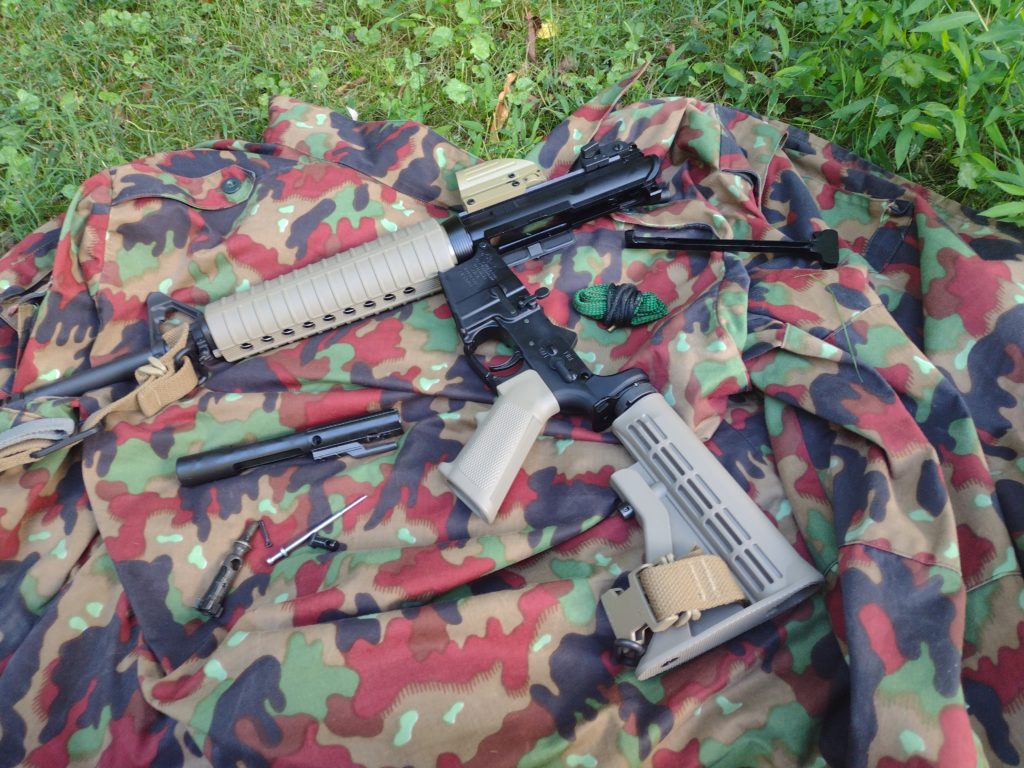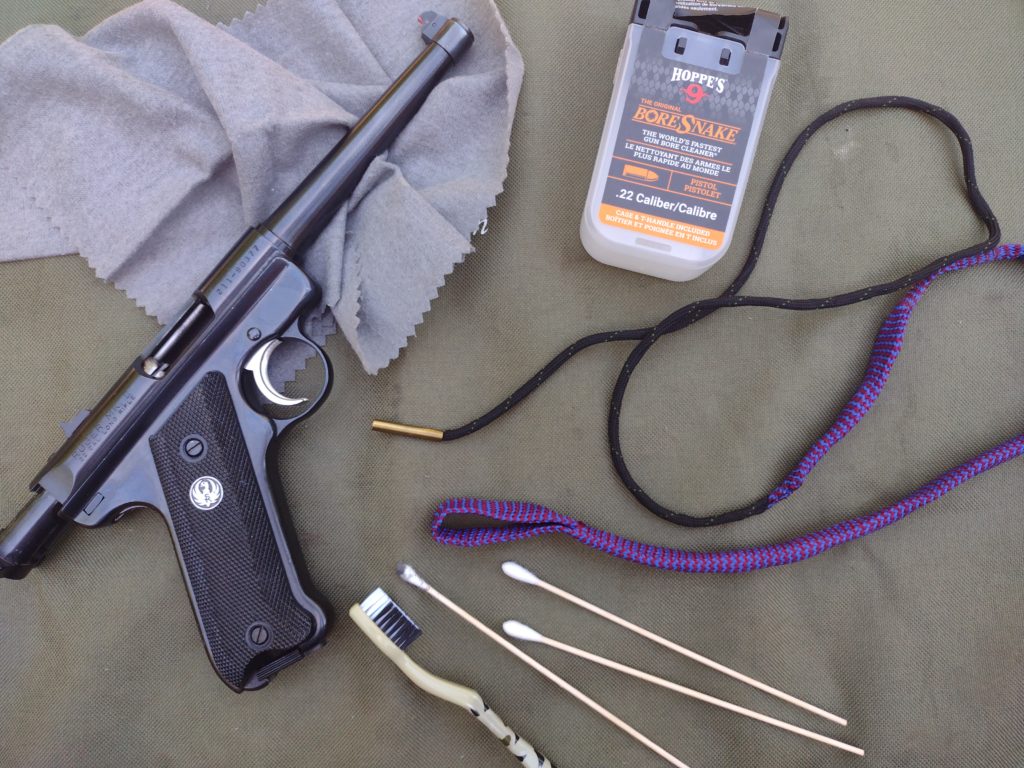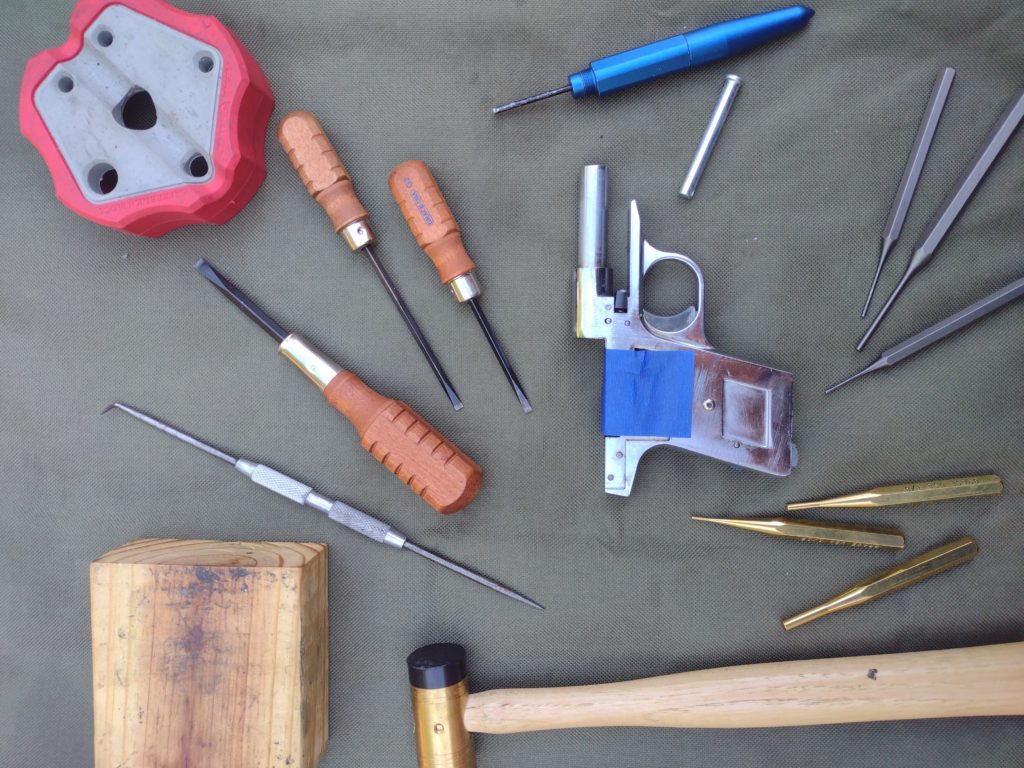How often should I clean my gun? What is the best way to clean my gun? For you new gun owners out there, how many times have you asked or wondered these questions? And for you seasoned professionals out there, how many times have you been asked one (or both) of these questions by a friend or client? I know I get asked these questions every week or two.
The short answer: “follow the recommendations and guidance found in your owner’s manual” (and by the way, most owner’s manuals can be downloaded from the manufacturer’s website). I usually also add in something like “take care of your gun so your gun will be able to take care of you.” But the long answer to firearm maintenance is, at least in my view, a tiered system containing five levels.
Let’s first address the “how often” question. Just like there are five levels of firearm maintenance (we’ll get to that in a second), there are typically five opinions on when to clean your gun. There are those who say, “I never clean my gun.” These people usually have an explanation of how today’s technology in firearms and ammunition has made cleaning your gun obsolete. True, technology has led to some great improvements, but you still need to clean your gun. Remember: “take care of your gun so your gun will be able to take care of you.” The second opinion on how often to clean a gun is date-based–either once a month, once a season, once a year, etc. Likewise, the third opinion involves a round-count triggering when to clean the gun–every 500 or 1000 or 2000 rounds. The fourth opinion is event-based: cleaning the gun at the end of a training event, range day, hunting trip, etc. But the fifth, and best, opinion on how often to clean a gun is as needed.
Cleaning your gun as needed actually incorporates all of the above opinions (except the never opinion…let’s just drop that one). Let me explain how I clean my guns as needed. I clean my guns after each event–they need it. If it is a long shooting event and I’m putting a ton of rounds down range, I’ll clean my guns during a break in the event after firing so many rounds.
I also have several guns sitting in the safe that may go years without being shot; those guns get a cleaning annually. I use an app to keep track of when I last fired my guns and when I last cleaned each gun. I can set a notification on each gun so that the app alerts me when the gun is ready for its annual cleaning. Each time I clean my guns, they don’t all get the same level of cleaning; each is cleaned to the appropriate level.
Before going any further, let me remind everyone that before conducting any maintenance on any firearm, ensure it is completely safe by unloading the firearm, visually and physically inspecting to make sure no round is in the chamber, and ensure all ammunition is removed from the work area ….and then double check that the firearm is unloaded!

Level 1 – Wipe Down: This is just what it sounds like; wiping the gun down immediately after using or handling it. The goal of a wipe down is to remove dust, debris, and corrosive fingerprints from your firearm. A wipe down does not address the bore or unexposed internal parts. Some shooters will give their gun a wipe down after a range session knowing that they will be back on the range the next day. Or if you pull a gun out of a climate-controlled safe to show it off to a friend, you may want to give it a wipe down after handling it and before placing back into storage. A wipe down can be accomplished with a lightly oiled, lint-free rag; or you can use (and re-use) the Birchwood Casey Gun & Reel Silicone Cloth.
Level 2 – Field Cleaning: The goal of a field cleaning is to keep the gun operational until you can conduct a detailed cleaning. I’ll conduct a field cleaning when shooting in a long training evolution or when on a multiple day back-country hunt. During a break in shooting or at the end of they day sitting around camp, I’ll break the gun down into its main components. I’ll then run a Hoppes 9 BoreSnake through the barrel a few times, and then clean and wipe down the components (barrel, bolt, bolt carrier, firing pin, etc.) with a lightly oiled rag.


Level 3 – Light Cleaning: A light cleaning involves wiping the gun down (internal and external parts) and running a BoreSnake through the barrel as in Levels 1 and 2; but here we add some focus to dirt-prone areas. An AP Brush and Q-Tips will help to clean areas like in and around the trigger housing. I may do a light cleaning when I only put a magazine’s worth of ammo through the gun, or when just confirming the gun’s zero just before deer season.
Level 4 – Detailed Cleaning: This is usually how I clean my guns, and it doesn’t take as long and it’s not as dificult as some people make it out to be. To conduct a detailed cleaning, start by field stripping your firearm per instructions found in your owner’s manual; or, better yet, search AGI’s Disassembly/Reassembly course catalog for your make and model and purchase the appropriate video that will walk you through how to properly tear your gun down and put it back together. Once the firearm is field stripped, begin with cleaning the barrel; use an AP brush to knock off as many particles as possible. Next, apply a liberal amount of cleaning oil to a bore brush and run it through the barrel. After the chemicals have had time to bust up the carbon, run patches through the barrel to ensure it is clean and dry. After the barrel, concentrate on the recoil system, slide, and/or lower receiver, bolt, bolt carrier group, etc., cleaning each with the AP brush, Q-Tips, and a rag. Once all components are clean, apply a small amount of oil to key friction points as listed in the owner’s manual. Once complete, reassemble and conduct a functions check.


Level 5 – Deep (or Professional) Cleaning: A deep, or professional cleaning requires the gun to be completely disassembled. This level of cleaning is not common and should be left to those with the proper training. If interested in learning how to become a professional, check out the American Gunsmithing Institute.
And that’s how and when I clean my guns. I made no reference to specific gun oils, but if you’re curious about which gun oil to use, check out a previous GCA Blog Post titled “10 Solvents You Should Know About.” And I have to say, my favorite cleaning tool is the BoreSnake. They are easy to carry, easy to use (it almost feels like cheating), and they do an amazing job ; but use them cautiously (especially on AR platforms). An AR barrel extension is very sharp and can wear away or fray the BoreSnake as you use it and may eventually result in a broken BoreSnake getting stuck in the barrel. A stuck BoreSnake is almost impossible to remove and there is a high chance of damaging the barrel while attempting to do so.
There are a lot of great gun cleaning kits and tools out there, I’d love to hear about your favorite.

Earl Roberts is the Owner-Operator and Chief Instructor of Mobile Marksmanship LLC, a Firearms & Safety Training Company located in Northern Virginia. Earl is a retired Marine, former private security professional, and an Emergency Medical Technician with a degree in Firearms Technology and multiple armorer certifications. His instructor credentials include NRA Rifle, Pistol, and Shotgun, National Sporting Clays Association Certified Shotgun Instructor, CCW Instructor, Range Safety Officer, Active Shooter Mitigation & Response Instructor, Crime Prevention & Personal Protection Instructor, Trauma First Aid Instructor, and CPR/AED Instructor. When not teaching, Earl can be found competing with shotguns, pistols, small-bore rifles, and/or muzzleloaders…and occasionally writing gun related articles.


